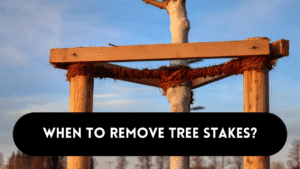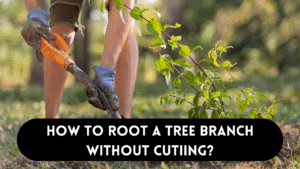Bees are essential pollinators crucial to maintaining a healthy ecosystem. However, when a beehive forms in an undesirable location like a tree, it may become necessary to remove it. While removing the hive, employing humane methods to preserve these valuable creatures is crucial. In this article, we will explore various methods to remove a beehive from a tree while prioritizing the safety and well-being of the bees.
Methods to Remove a Beehive from a Tree?
There are vairous methods which you can use to remove Beehive from a tree some of them are:
Trap Out Method
The Trap Out method is a non-destructive way to remove bees from a tree. It involves setting up a one-way exit for the bees using a cone made of 1/8-inch hardware cloth. This cone allows bees to exit the hive but prevents their return.
Next to the exit, a bee box is placed containing a frame of comb with eggs and brood from another hive. The scent of family in the bee box attracts the bees, encouraging them to relocate to the bee box eventually. This process can take several weeks but ensures the bees leave the tree without harm.
Cut-Out Method
The Cut-Out method is used when the entrance to the hive is large enough to access the comb. It involves carefully removing the comb and placing it in frames, allowing for easy relocation.
To gather the bees, a specialized bee vacuum can be used. Alternatively, bees can be collected after nightfall when they are less active. This method requires precision to avoid damaging the comb and ensures the bees can be relocated safely to a new hive.
Opening the Tree
If the beehive is inaccessible, the tree may need to be opened or cut down to access the brood comb and the queen. The brood comb is carefully removed and wired into empty frames within a standard hive.
When the queen is captured, the rest of the bees will typically follow her scent and move into the new pack within a few hours. Though this method may be more intrusive, it allows for the safe relocation of the entire colony.
Sealing and Funneling
The sealing and funneling method is a variation of the Trap Out method. It involves sealing all but one entrance of the hive and placing an inverted screen funnel over the remaining entrance.
Bees can exit the hive but cannot return. A new throng is positioned near the exit, containing an empty comb to attract the bees. Once all the combs are removed from the tree, the beehive is placed near the former entrance to encourage the bees’ relocation.
Professional Exterminator
In some cases, relocation or DIY methods might not be feasible or safe. Hiring a professional exterminator should be the last resort when all other options are exhausted.
A skilled exterminator will have the necessary expertise and equipment to remove the beehive safely. However, ensuring the exterminator follows humane practices and tries to relocate the bees rather than exterminate them is essential.
The Importance of Bee Conservation
Bees play a vital role in pollination, supporting the growth of various crops and wild plants. It is crucial to prioritize their conservation and well-being. Rather than resorting to extermination, contacting a local beekeeper or bee removal service is encouraged.
Beekeepers can safely relocate the bees, allowing them to continue their vital pollination work in a more suitable location. Additionally, supporting bee-friendly practices, such as planting bee-friendly flowers and providing bee-friendly habitats, can contribute to preserving these essential pollinators.
Frequently Asked Questions
FAQ 1: How to Safely Remove a Beehive from a Tree?
Safely removing a beehive from a tree is essential to ensure the well-being of both the bees and the person performing the removal. Here’s a step-by-step guide on how to do it:
- Assess the Situation: Before attempting removal, observe the hive from a safe distance. Identify the type of bees and assess their behavior. If they are honey bees, consider contacting a local beekeeper or bee removal service for relocation.
- Wear Protective Clothing: Bees can become defensive when their hive is disturbed. Wear protective clothing, such as a bee suit, gloves, and a veil, to minimize the risk of stings.
- Choose the Right Time: Bees are generally less active early in the morning or late in the evening. Plan the removal during these times to reduce bee activity.
- Use Smoke: Smoking the hive with a bee smoker can help calm the bees and make them less aggressive during removal.
- Select the Removal Method: Depending on the hive’s location and accessibility, choose an appropriate removal method. Options include Trap Out, Cut-Out, opening the tree, sealing and funneling, or hiring a professional exterminator as a last resort.
- Follow the Chosen Method: Follow the steps of your chosen method carefully and precisely. Pay close attention to the bees’ reactions and adjust your approach accordingly.
- Relocate the Bees: If you remove the hive without harm, relocate the bees to a suitable location, preferably with a local beekeeper or bee removal service.
- Clean Up: After the removal, clean up any remaining honey and beeswax around the tree to prevent attracting new swarms.
Remember, bee removal can be dangerous, and it’s best to seek professional help if you are uncertain or uncomfortable.
FAQ 2: What Equipment is Needed to Remove a Beehive from a Tree?
The right equipment is crucial for safely removing a beehive from a tree. Here’s a list of essential tools you might need:
- Bee Suit: A full-body bee suit protects against bee stings and should include gloves and a veil.
- Bee Smoker: A bee smoker emits smoke, which helps calm the bees during removal.
- Ladder or Lift: Depending on the hive’s height, you might need a ladder or lift to access the hive safely.
- Hive Tool: A hive tool is used to pry apart hive components and remove frames.
- Bee Vacuum: If performing a Cut-Out, a bee vacuum is helpful for gently collecting bees without harming them.
- Bee Box or Hive: If using the Trap Out or opening the tree method, you’ll need a bee box or a hive to relocate the bees.
- Hardware Cloth and Funnel: For the sealing and funneling method, hardware cloth and a funnel are necessary to create a one-way exit for the bees.
- Protective Sheet: Use a protective sheet to cover the area around the hive during removal to catch falling bees and debris.
Ensure you have all the necessary equipment before attempting any beehive removal to ensure a smooth and safe process.
FAQ 3: What are Some Natural Ways to Remove a Beehive from a Tree?
While relocating bees is ideal, sometimes natural methods can encourage them to leave the tree voluntarily:
- Place Bee-Friendly Plants: Plant bee-attracting flowers and herbs near the tree. Bees might relocate to these new sources of food and shelter.
- Create a Bee-Friendly Habitat: Set up bee houses or nesting boxes near the tree to provide alternative nesting sites for the bees.
- Sprinkle Cinnamon: Bees dislike the smell of cinnamon. Sprinkle cinnamon powder around the hive or the tree’s base to encourage them to relocate.
- Use Vinegar Spray: Mix equal parts of water and white vinegar and spray it around the hive. The pungent smell can prompt the bees to find a new location.
- Provide a Bee Feeder: Set up a bee feeder with sugar water near the hive. The bees might prefer the easy food source and move to the feeder instead.
- Wait for Natural Swarming: Be patient and allow the bees to swarm naturally. Once they do, they might leave the old hive and form a new one elsewhere.
Remember that these natural methods might not always work, and professional assistance may be necessary for safe and effective beehive removal.
Conclusion
Removing a beehive from a tree requires careful consideration to ensure the safety and well-being of the bees. Utilizing humane methods like the Trap Out, Cut-Out, or opening the tree allows the bees to relocate without harm. Sealing and funneling can also facilitate the safe removal of bees from a tree. However, if these methods are not viable, a professional exterminator can be called upon as a last resort. Ultimately, preserving bees and their essential role in the ecosystem should be a top priority for everyone, and choosing humane removal methods ensures that bees can continue their essential work in a new, suitable location.




